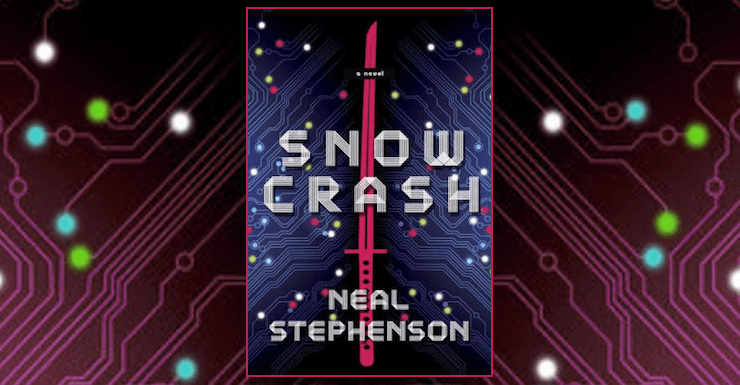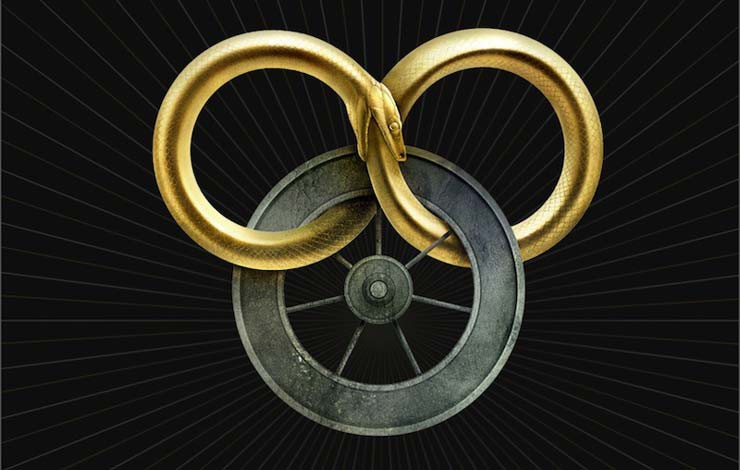Recently, I was honored to give a paper at the annual conference of the Philological Association of the Carolinas. I give a lot of lectures in a lot of venues on a lot of subjects—only one week before I was giving a keynote to a medical society on the battle head-wounds of David II of Scotland and Henry V of England—but this particular talk was one that I thought might interest y’all hereabouts: it was about using Harry Potter and The Hobbit to teach philology.
If you don’t know, philology is, broadly speaking, the study of language within (mostly) textual contexts. Philologists look at how languages form, how they relate to one another, how they impart meaning … and how we can know any of that at all. By its nature it brings together a diverse swath of academic interests from textual criticism, linguistics, and history and unites them into a formal study.
It’s pretty cool stuff.
So, below, is a copy of my talk. (Well, this is more or less what I said. I tend to play the room and not strictly follow my script.)
“Harry Potter and the Philologist’s Ring: Introducing Philology Through Fantasy”
Since the initial publication of Harry Potter and the Philosopher’s Stone in 1997, J.K. Rowling’s series of Harry Potter novels—and the continually growing multi-media apparatus surrounding them—has attracted an enormous international audience. It is rare indeed to find a student in class that knows nothing of the adventures of the young wizard and his friends from their days at Hogwarts School of Witchcraft and Wizardry to their climactic struggle with the dark wizard Lord Voldemort. In the pantheon of fantasy writers, perhaps only J.R.R. Tolkien, with his novels of Middle-earth (most notably The Hobbit [1937] and The Lord of the Rings [1954-55]), can rival Rowling’s work in terms of its impact.
What I’m going to talk about today are some of the fruitful ways in which teachers can leverage the near-universal awareness of these—and by extension other works of fantasy literature, like the The Wheel of Time (1990-2013) by Robert Jordan, a Citadel alumnus—in order to introduce students to the joys of philology.
J.K. Rowling’s Harry Potter Spells
You know those memes about how there are only two kinds of people in the world?

Well, I think there are two kinds of philologists in the world: those who smile at the spell names in Harry Potter, and those who don’t. I am, perhaps obviously, in the former group: I am positively delighted by these linguistic Easter eggs within these wonderful books.
But before I get to why I am so very pleased with this aspect of Rowling’s Potterverse, I want to concede a point to the other side: Rowling is often noted as having studied Latin and the Classics at the University of Exeter, and this is presented as having great relevance to her use of classical languages in the wizarding world. This is true, of course. But also, well, one cannot objectively give her First Class Honours for her Latin work in Harry Potter.
Let’s start with something simple: the spell for getting an object to levitate and float over into your hand—like, say, a Nimbus 2000—is Accio, and this happens to be spot-on. Accio is a fourth conjugation verb, first-person singular, active indicative. It means, as I’m sure we all know, ‘I send for’ or, more simply, ‘I summon.’ Full marks.
Likewise, one of the three unforgivable curses is the Cruciatus Curse, Crucio — which is once again a first-person singular, active indicative—meaning ‘I torture.’ And Cruciatus, too, is right on point: it’s the nominative noun for ‘torture.’
Alas, they aren’t all so perfectly fitted. Take, for instance, the Patronus Charm, Expecto Patronum. Rowling’s own Pottermore.com website states that this spell “roughly translates into ‘I expect (or await) a guardian’”—but there’s a decent amount of “roughly” in that translation. The first part of this is a solid first conjugation verb, from expecto, expectare, expectavi, expectatus, and in Classical Latin it means ‘I await’ or, perhaps more loosely, ‘I hope for.’ So far, so good. Patronum, though, isn’t exactly a “guardian”—at least not in the sense of a magical vaporous emanation of hope that can shield a person from Dementors. In Classical Latin the word instead refers to a ‘patron,’ and it does so in what we might call a mafia sense: your patron was a person of greater wealth and power than you were, a person of, in simple terms, a higher status if not a higher class of society. The word, in fact, derives from pater, the Latin for ‘father.’ This is entirely different from the notion of the externalized self that the Patronus represents in the Potterverse—not to mention that the notion of class distinction it imparts would hardly be welcome on the lips of so many of our heroes in the books.

I’m pointing out how Rowling has mis-stepped here—and I do so well-aware that she could swell more copies of a list of twelve random items currently in her cupboard than I will ever sell of my Shards of Heaven novel trilogy—but along the way I hope I’m also illustrating why her usage of Latin actually makes me so very happy.
Sure, it’s nice just to see someone making a “dead” language live again—there’s a reason I’ve got Winnie Ille Pu on my bookshelf—but beyond that, the very business of finding out how Rowling might have gotten something wrong is an enormously useful way of helping students to approach such philological matters. Understanding why Expecto Patronum isn’t quite the most fitting verbiage for the Patronus Charm requires an investigation into Latin linguistics and history. It requires, in short, opening a dictionary and a grammar. For the teacher of such things, that’s nine-and-three-quarters of the battle right there.
Plus, along the way, we discover other possible insights: is the pater origin in Latin a wonderfully subtle Easter egg given the connection between Harry’s Patronus and that of his father? I sure like to think so.
Let’s look at another example: the spell to disarm an opponent is Expelliarmus. This is, to an English eye, built from the words expel and arms (meaning ‘weapons’)—which makes a great deal of sense for disarming an opponent. Except, in Latin, this doesn’t work quite as neatly. Armus doesn’t mean ‘arms.’ It is, literally, a second declension noun in the nominative case, and it refers to an animal’s ‘forequarters.’ So if anything is getting expelled here, it’s a shoulderblade.
What Rowling wants here, “arms” as in “weapons,” would be in the accusative case, and it would be armum: Expelliarmum, not Expelliarmus. Except, well, the first part of that word isn’t right, either. If we are to expect any consistency from the construction of these spells, the first part of this ought to be a first-person singular, active indicative verb—like the aforementioned Accio or Expecto. In this case, the word would be Expello, meaning ‘I drive out.’ Thus, Rowling’s Expelliarmus really ought to be, in a purely linguistic sense, Expello Armum.
It isn’t, obviously—and, again, J.K. Rowling has sold a castle in Scotland’s worth of books more than I ever will—but the point isn’t so much the question of right and wrong but the question of how and why, which can stealthily push our students into the productive and functional usage of the very resources that we want to see them use as budding philologists.
On top of all that, I’ve been here comparing Rowling’s spells to Classical Latin, but in truth there’s no reason that we must do so. Could we not postulate a Wizarding Latin, which branched off from the linguistic tree earlier (perhaps parallel to Faliscan) or later (parallel to Vulgar Latin and the formation of Romance languages)? Doing so not only introduces our students to the central evolutionary principles of philology but also invites them to dive deep into such matters to suss out conclusions (and theoretical forms) of their own.
Just thinking about it makes me want to write a medieval tale in the expansive Potterverse—a story of the Four Founders, secret societies, and the power of magic, memory, and language. (Oh please oh please oh please let me get asked to do this one day.)

I’ve been talking here of Latin matters, but the Potterverse actually provides an even richer field for the philologist, because Rowling doesn’t confine herself to Latin alone in the construction of her spells. As M.G. Dupree has noted in the essay “Severus Snape and the Standard Book of Spells: Ancient Tongues in the Wizarding World,”
it is interesting to note that [in] the wizarding world … many lower-level hexes and household charms [are] in English, such as Scourgify. It’s in the higher-order spells that one sees the shift to Latin and Latinate phrases: Expecto Patronum, Cave Inimicum, Fidelius, Expelliarmus, Finite Incantatem.
Rarest of all spell languages in the British wizarding world is Greek, which makes surprisingly few appearances. In pure form, there are only two Greek-based spells mentioned in all of the seven books: Anapeo and Episkey. The interesting thing to note is that both of these are spells with medical uses, which should not be surprising: in the ancient world, Greek was the language of physicians.
To put it another way, the etymologies of the spell names in Rowling’s Potterverse provide a fascinating glimpse into not only the historical matters of linguistic development but also the wider cultural questions of comparative analysis.
J.R.R. Tolkien
Rowling is hardly the first writer to play with language in ways that can have pedagogical value. In an article a few years ago I talked about the philological puzzles encoded into Tolkien’s claim to have invented the word hobbit—a claim that, it turns out, was very likely intended as an amusing linguistic game. Diving down that particular hobbit-hole leads one on a winding circuit from Joseph Wright’s English Dialect Dictionary (EDD) to the venerable Oxford English Dictionary (OED)—with stop-overs in forgotten horticultural terminology and countryside fairies. Following the bouncing Bilbo through all this, it turns out, is a great way to introduce students to the history and usage of both primary sources, like a fascinating 1888 discussion about the standardization of weights and measures in both technical and linguistic terms that took place in the wonderfully named House of Commons’ Select Committee on Corn Averages … and secondary sources, like the enormous range of information that’s waiting to be pulled out of our great descriptive dictionaries. All of it is fascinating, and all of it reveals how Tolkien could build a world from a word.
Beyond this specific word study, the ways in which Tolkien’s famous book, The Hobbit, is deeply intertwined with Beowulf provides a ready access point for students to see how a philologist can work to fill in the blanks of the historical record in pursuit of sources.
And I mean blanks quite literally.
There is but one surviving manuscript of Beowulf: the Nowell Codex, shelved as Cotton Vitellius A.XV in the British Library. It’s a fairly clear and clean manuscript, since two anonymous scribes wrote legibly and seemed to be careful in their work. Our typical difficulties in reading the manuscript are the result of deterioration, particularly the erosion of the manuscript’s edges due to its experience in the Ashburnham House fire of 23 October 1731. This is not the case, however, with folio 179 of the manuscript, on which several portions of the text have been badly obscured. It’s most famous editor, Frederick Klaeber, terms this page “the worst part of the entire MS,” noting that “it has been freshened up by a later hand, but not always correctly” (Beowulf, ed. Klaeber, 82).

The Wrenn-Bolton edition of Beowulf, standard for many modern critics, gives some indication of the difficulties in the manuscript here by providing the following reading of a set of these troublesome lines. Here ellipses mark the “blank spaces,” the gaps in the text:
niða nat-hwylc . . . . . . . . . . . gefeng
hæðnum horde hond . . . . . . . . .
since fahne he þæt syððan . . . . .
þeah ðe he slæpende besyred wurde
þeofes cræfte; þæt sie ðiod onfand,
bigfolc beorna, þæt he gebolgen wæs. (lines 2215-2220)
Klaeber’s earlier edition, which became the de facto standard during Tolkien’s career, proposes the following reading for these difficult lines:
nið[ð]a nathwylc, (se þe ne)h gefe(al)g
hæðnum horde, hond (wæge nam),
(sid,) since fah; ne he þæt syððan (bemað),
þ(eah) ð(e he) slæpende besyre(d wur)de
þeofes cræfte; þæt sie ðiod (onfand),
b(ig)folc beorna, þæt he gebolge(n) wæs.
Tolkien, in his unpublished “Cruces in Beowulf” notebook now housed in Oxford’s Bodleian Library, analyzes and abandons various proposed solutions for the gaps in the manuscript in the course of making his own (MS Tolkien A28/C-D, fol. 104r). The restrictions of the Tolkien Estate (I had to sign my life away to see this stuff) mean I cannot reproduce his final reading here, but I can tell you that it is nearly identical to Klaeber’s reconstruction. Happily, Tolkien’s subsequent prose translation of the passage was recently (at last!) published:
This after came to pass in later days in the clash or wars, when Hygelac was fallen, and swords of battle had been Heardred’s bane amid the shielded ranks, what time the warlike Scyldings, dauntless men of arms, sought him out amid his glorious people, and came upon him, nephew of Hereric, with fell assault, then into Beowulf’s hands came that broad realm. Well he ruled it for fifty winters—now was he a king of many years, aged guardian of his rightful land—until a certain one in the dark nights began to hold sway, a dragon, even he who on the high heath watched his hoard, his steep stone-barrow: below lay a path little known to men. Therein went some nameless man, creeping in night to the pagan treasure; his hand seized a goblet deep, bright with gems. (lines 2200-20, trans. Tolkien, 77)
It is all too easy to view this passage as a simple bridge between the Grendel-centric first half of the poem and the dragon-centric second half. By such a reading it is merely a means to fill the fifty-year gap between two points in Beowulf’s career and to explain the rousing of the dragon against the Geats.
A closer reading of it, however, reveals that the text opens as many gaps as it fills. It is true that we receive some notion of the tragic events leading to the demise of the aging hero, but even beyond the literal gaps in the text at this point and the questions they beg (on which see Kevin Kiernan’s wonderful essay), there is much that we are missing when it comes to the catalytic event that stirs the dragon to anger. What exactly does the poet mean when he writes of, as Tolkien translates it, “a path little known to men”? How is it that the cup-thief remains nameless? How did he not awaken the dragon? And why refer to the thief using the rare Anglo-Saxon word nathwylc, which means both ‘I know not who’ and ‘I know not what’? The explanation, in other words, provokes more speculation.
Though we might expect a high degree of academic comment in light of these puzzles, few critics have responded with much beyond silence or apathy. Theodore Andersson, for example, seems to speak for the majority when he writes that “the thief has an auxiliary role in this momentous finale. . . . His function is only to activate the dragon” (493). Perhaps not surprisingly, though, the impulse to discount the thief’s role in the story does not seem to be an opinion that Tolkien shared. In his unpublished papers we can observe first-hand how the professor labored to resolve, as an editor, the textual problems with this passage in his notebooks, but more importantly we can see its impact in his fiction. There, Tolkien shows a consistent interest in the idea that seemingly “small” characters, such as the thief in Beowulf, could have an extraordinary impact on the world around them. Bilbo’s adventures and Frodo’s journey, for instance, both support the idea that it is often the most insignificant of things that are of the highest importance, as do the actions of lesser-known characters in Tolkien’s “Leaf by Niggle,” “The Homecoming of Beorhtnoth Beorhthlem’s Son,” or Farmer Giles of Ham. So when it comes to this “nameless” nathwylc in Beowulf who by way of “a path little known to men” stole from the dragon a cup and incited the wrath that killed great Beowulf—it’s hard indeed not to think of Bilbo, the man-who-isn’t-a-man, who used a path known only to the dwarves to steal another cup from another dragon. Tolkien, we can begin to see, used his philological interests to build The Hobbit to fill in those annoying blanks in Beowulf, his plot evolving out of his editorial insights. And we, in turn, can use Tolkien’s fiction to reverse engineer the process and lead our students to the discoveries of literature and the philological wonders behind them.
Conclusion

I’ve only had time to provide a few examples today of how philology coincides in fascinating and pedagogically useful ways with fantasy literature. I may be preaching to the choir in this regard, but my point, such as it is, is to say that as teachers we must learn to find the most effective means to make contact with our students, to introduce them to our passions in a fun and familiar way … to help them learn, as but one more example, how and why Hermione was right: the rule of penultimate stress means that—even if it’s a ludicrous mishmash of English and hack-Latin—the spell is indeed Wingardium LeviOHsa and not Wingardium LevioSAH.
 Michael Livingston is a Professor of Medieval Culture at The Citadel who has written extensively both on medieval history and on modern medievalism. His historical fantasy trilogy set in Ancient Rome, The Shards of Heaven, The Gates of Hell, and The Realms of God, is available from Tor Books.
Michael Livingston is a Professor of Medieval Culture at The Citadel who has written extensively both on medieval history and on modern medievalism. His historical fantasy trilogy set in Ancient Rome, The Shards of Heaven, The Gates of Hell, and The Realms of God, is available from Tor Books.














